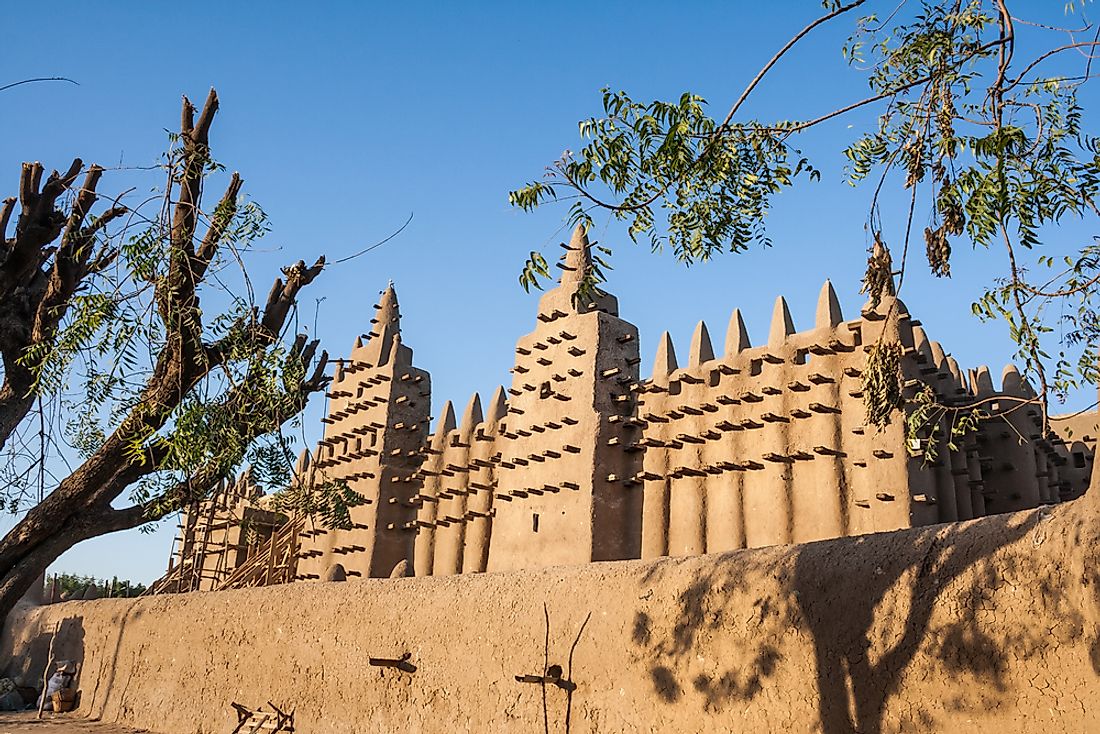The Great Mosque of Djenné: The Largest Mud Building In The World

Buildings made of adobe are among the earliest building types. Adobe is made from earth and is translated from Spanish to mean "mudbrick". Most of the buildings made of adobe or mud are known to be durable and account for some of the oldest buildings in use in the world. However, they are susceptible to natural disasters such as earthquakes and tremors if they are not properly reinforced. Buildings made of mud are common throughout Asia, Africa, America, and Eastern Europe. Some of the famous mud buildings in the world include Taos Pueblo, Khiva Wall, Chan Chan, Siwa Oasis, Shibam, and the Great Mosque of Djenne.
The Great Mosque Of Djenné
One of the largest mud buildings in the world is known as the Great Mosque of Djenné. It is considered to be the greatest achievement of Sudanese-styled architecture. Djenné Mosque was constructed on the flood plains of the Bani River. The first mosque to be constructed on the site was built around the 13th century; however, the present mosque was built in 1907. Djenné Mosque is not only a center of the community of Djenné but also an important landmark in Africa. It is also a World Heritage Site together with the Old Town of Djenné. The town’s colorful market is located at the foot of the mosque.
The Historical Background
The building of the first mosque in Djenné dates back as late as 1330 although the actual dates are not quite known. The construction site was a palace for a Sultan Kunburu who had converted to Islam and had his palace brought down and a mosque built on the site. The sultan built his palace next to the mosque with his successor building towers of the mosque and the following building a wall around the mosque. The mosque was not mentioned in any publication until a French explorer visited the area in 1828 and described the dilapidated state of the mosque. The mosque had been abandoned ten years before Rene, the French explorer, visited the area. Seku Amadu, a Fulani leader, had conquered the area. Disapproving of the mosque, he allowed for it to fall beyond repair.
History And Architecture Of The New Mosque At Djenné
Djenné was captured by French forces in 1893. In 1906, the administration of the French forces arranged for the construction of an original mosque and a school at the site of the old mosque. The building of the new mosque began immediately using the forced labor under the command of Ismaila Traore. It was completed in 1907. Some parts of the mosque, especially the outer wall, followed the pattern of the old mosque. The French influence on the design of the mosque is debatable, as some scholars have argued that they had little influence. The walls of the mosque are built of bricks, sands, and earth and are coated with a plaster. The mosque is constructed on a platform which measures 246 feet by 246 feet and raises 9.8 feet above the marketplace level. The platform is intended to protect the mosque from damages that may be caused by Bani River Floods. Only small changes have been made to the mosque, although it benefits from regular maintenance.











